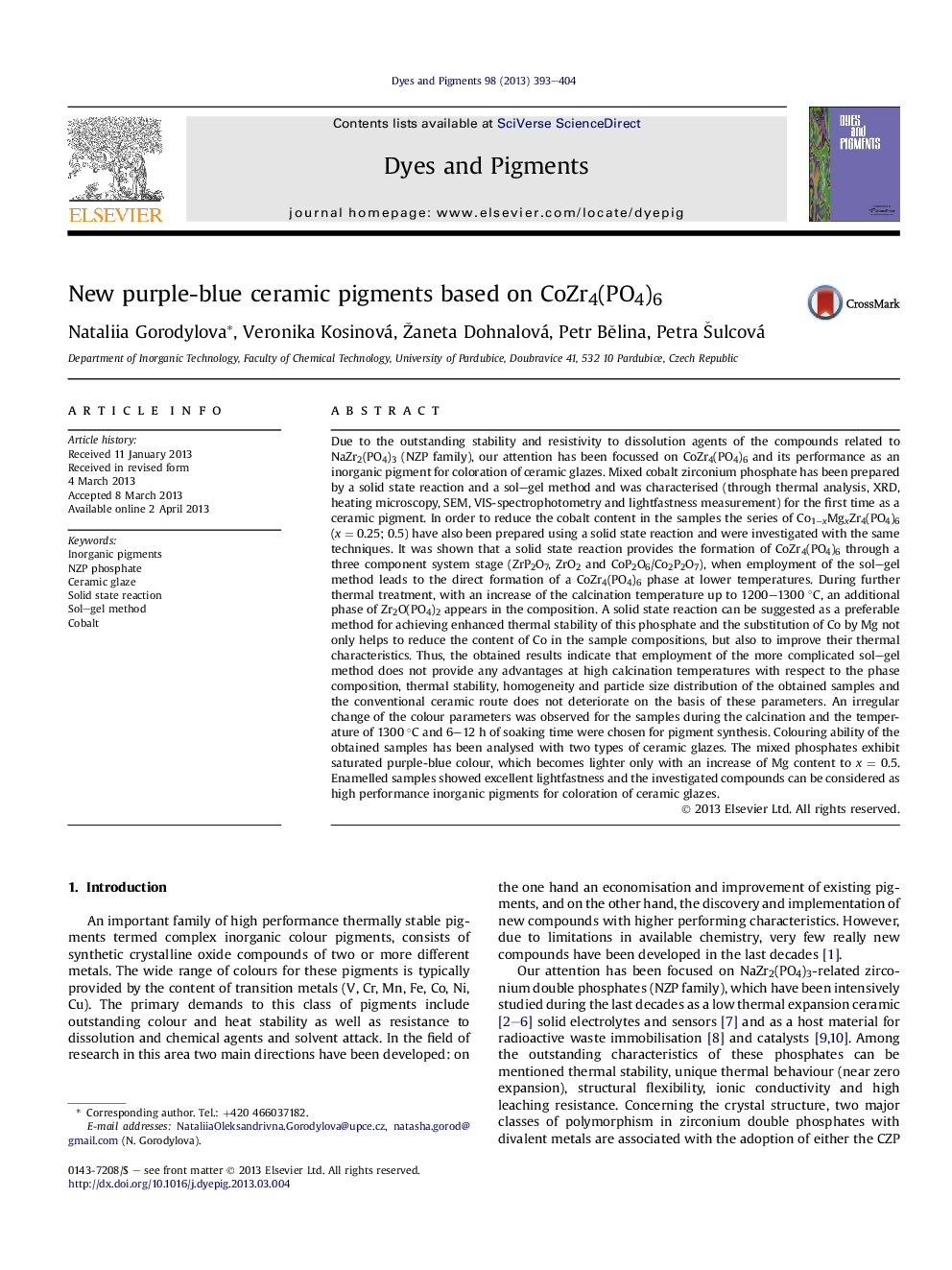| کد مقاله | کد نشریه | سال انتشار | مقاله انگلیسی | نسخه تمام متن |
|---|---|---|---|---|
| 176443 | 458943 | 2013 | 12 صفحه PDF | دانلود رایگان |

• Co1−xMgxZr4(PO4)6 was characterised as thermally stable purple-blue pigment.
• Solid state reaction provides the formation of CoZr4(PO4)6 through 3 component stage.
• Sol–gel method lead to the direct formation of CoZr4(PO4)6 at a lower temperature.
• The substitution of Co by Mg improves the thermal stability of the samples.
• Being enamelled the pigments provide saturated colours with excellent lightfastness.
Due to the outstanding stability and resistivity to dissolution agents of the compounds related to NaZr2(PO4)3 (NZP family), our attention has been focussed on CoZr4(PO4)6 and its performance as an inorganic pigment for coloration of ceramic glazes. Mixed cobalt zirconium phosphate has been prepared by a solid state reaction and a sol–gel method and was characterised (through thermal analysis, XRD, heating microscopy, SEM, VIS-spectrophotometry and lightfastness measurement) for the first time as a ceramic pigment. In order to reduce the cobalt content in the samples the series of Co1−xMgxZr4(PO4)6 (x = 0.25; 0.5) have also been prepared using a solid state reaction and were investigated with the same techniques. It was shown that a solid state reaction provides the formation of CoZr4(PO4)6 through a three component system stage (ZrP2O7, ZrO2 and CoP2O6/Co2P2O7), when employment of the sol–gel method leads to the direct formation of a CoZr4(PO4)6 phase at lower temperatures. During further thermal treatment, with an increase of the calcination temperature up to 1200–1300 °C, an additional phase of Zr2O(PO4)2 appears in the composition. A solid state reaction can be suggested as a preferable method for achieving enhanced thermal stability of this phosphate and the substitution of Co by Mg not only helps to reduce the content of Co in the sample compositions, but also to improve their thermal characteristics. Thus, the obtained results indicate that employment of the more complicated sol–gel method does not provide any advantages at high calcination temperatures with respect to the phase composition, thermal stability, homogeneity and particle size distribution of the obtained samples and the conventional ceramic route does not deteriorate on the basis of these parameters. An irregular change of the colour parameters was observed for the samples during the calcination and the temperature of 1300 °C and 6–12 h of soaking time were chosen for pigment synthesis. Colouring ability of the obtained samples has been analysed with two types of ceramic glazes. The mixed phosphates exhibit saturated purple-blue colour, which becomes lighter only with an increase of Mg content to x = 0.5. Enamelled samples showed excellent lightfastness and the investigated compounds can be considered as high performance inorganic pigments for coloration of ceramic glazes.
Figure optionsDownload as PowerPoint slide
Journal: Dyes and Pigments - Volume 98, Issue 3, September 2013, Pages 393–404